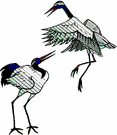More Canon City birding

Birding around Canon City from 2-9 to 2-11 was a little slow but with some interesting birds. On 2-9-06 I flushed (accidentally as I actively try to avoid disturbing birds) a Wilson's Snipe in a small creek near the Canon City Riverwalk. This species is referred to as "Common Snipe" in many field guides. This is because it was recognized only a few years ago as a separate species from the Common Snipe of Eurasia, which resulted in the name change.
That same day I saw the adult male Williamson's Sapsucker at Canon City's Lakeview Cemetery pictured in this post. This cemetery is one of several locations in Canon City that have hosted Williamson's, Yellow-bellied and Red-naped Sapsuckers in the winter for the past several years. In addition to this Williamson's, I also saw a female Yellow-bellied Sapsucker at this location.
Yesterday, on a cold snowy day, I heard the plaintive call of a Say's Phoebe. We usually have one or two birds of the this species that winter-over in the Canon City area. This one had found a great place to find insects on a cold day, an unused sewer district area on the Canon City Riverwalk with old sewage tanks that collect rain/snow. There is always a little open water where the sun hits the concrete sides and the biological remains make a great brew for insects (the first Fremont Co Black Phoebe stayed around these tanks in the winter of 1996 when the temps went to an extremely low for this area of -18 degrees and survived).
At Centennial Park I observed a female Yellow-bellied Sapsucker. This is another area that has hosted sapsuckers regularly for the past several winters.
Also yesterday a Harlan's race/subspecies (of the Red-tailed Hawk species) perched on several trees along the Riverwalk, flushing frequently. This bird, like most the Harlan's I have observed (tho not sufficient numbers to form any generalization that this is a characteristic of this group), was even more sensitive to human disturbance than other subspecies of Red-tails. This bird appeared to see me looking at it from several hundred yards away (ie, moving its head to look straight at me)and flushed though I was standing still. This also happened twice when I refound it in my car. Again I was several hundred yards away and had to scope the bird. Though I remained in my car, it flushed in apparent response to my watching it.
SeEtta










